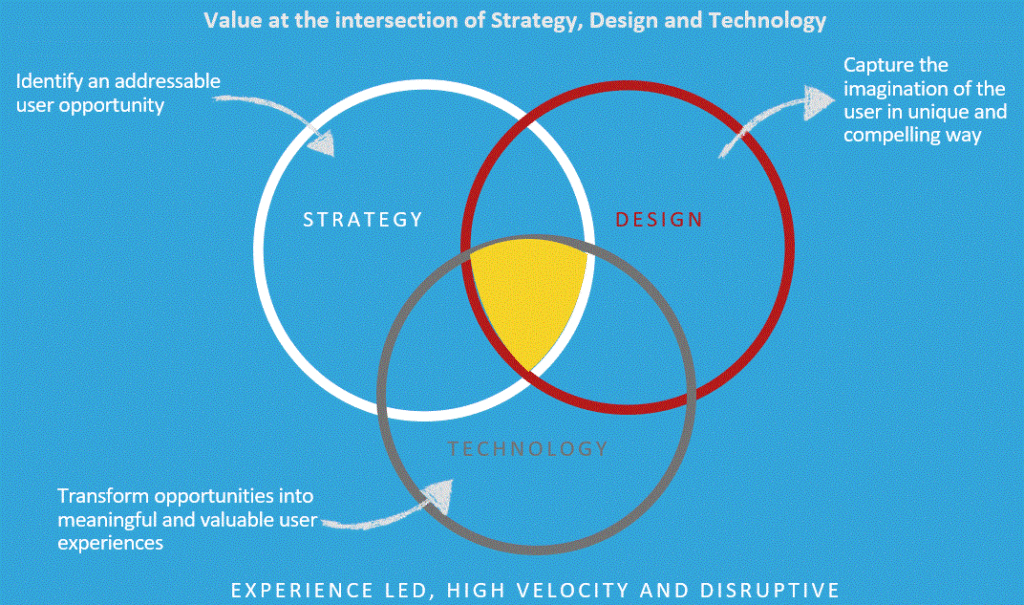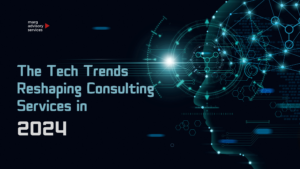“The first step in exceeding your customer’s expectations is to know those expectations.” – Roy H. Williams
“The customer experience is the next competitive battleground.” – Jerry Gregoire
“Your most unhappy customers are your greatest source of learning.” – Bill Gates
“Make the customer the hero of your story.” – Ann Handley
To create a sustainable ecosystem for driving growth in any business, the focus should be on customer experience. It’s been a decade since customers started seeking digital transformation. Jargon abounded and for a layman, unaware of things like AI, IoT, ML, Advanced Analytics, Robotics, and so on, it was a nightmare. It is safe to say that people are now getting more used to these terms but there still is that question which organisations continue to ask – “so, what is Digital Transformation and what can it do for me?”

What is digital?
To unleash the word “Digital” one has to think from a child’s mindset, which is creative, innovative, and away from preconceived notions. Recently my 3-year-old son created a moving gun using his Mega BloksTM. The same blocks were used earlier to create a building, a helicopter, a park, a forest, a fuel station and whatnot. This is an example of how the thought process should be focused on resolving the customer’s need by optimal use of resources with an innovative mindset.
Digital is about customer experience, seamlessly rendered across multiple channels. It provides a unique and personalised experience for each user. The essence of digital is designing a product that brings the best experience to the customer.

The digital experience often desired, is in a manner of speaking, the mix of a few potent things (witches’ brew anyone?!):
- The Simplicity of Apple
- The Omnipresence of Google
- The Engaging nature of YouTube
- The Intelligence of Amazon
- The Immediacy of Twitter
- The Experience of Burberry
Now with a laundry list like that the digital transformation of an enterprise can seem really daunting! In reality, the philosophy of digital transformation can be reduced to 3 key pillars – Technology, Design, and Strategy, as given below. It is at the intersection of these three pillars that customer value is created during a digital transformation.
Digital Transformation – Customer Value at the intersection of Technology, Design and Strategy

Digital strategy and mindset
Digitalisation is the harbinger of change. At the same time, resistance to change by business leaders, entrepreneurs, and employees is often encountered as a mindset. Organisations should foster a growth mindset and be prepared to embrace opportunities to maximise resource potential to truly reap the benefits of digital transformation. Hence it’s vital that elements of organisational culture like individual behaviour, work culture, practices and mindsets be part of the scope of a digital transformation exercise.
In my opinion, in today’s environment, one cannot leave out the Design Thinking approach while talking about Digital Transformation. They go hand in hand. Design Thinking is a human-centered collaborative approach that can truly evaluate the possibilities of digital transformation for an organisation that is creative, iterative, and practical.
A digital mindset is all about improving customer experience at high speed. It looks at out-of-box solutions that would be in tune with the needs of the user. Design thinking is about the coming together of Feasibility, Desirability, and Viability, and is characterised by the 5 phases:
- Empathise – for meaningful innovations one needs to know the user and understand their needs
- Define – Create a meaningful and actionable problem statement
- Ideate – Brainstorm and create multiple solutions to address the customer need
- Prototype – Create low-resolution prototypes that are quick and cheap to obtain user feedback
- Test – Involve the user in testing the prototype

Digital process
A digital process refers to the use of digital technology to perform a process or processes in order to accomplish a workflow or function. It can be, for example, the automation of typical sales processes with an emphasis on user-centric design. Sales, marketing, production, supply chain, inventory control, administration, IT, and management processes are among those benefitting from this digital process approach.
Agile
One of the key tenets of the digital process approach is agility with customer requests and prompt responsive actions. It is a practice that promotes continuous iteration of development and testing throughout the software development lifecycle of the project. Both development and testing activities are concurrent, unlike the Waterfall model.
It is not a tool, methodology, or framework. It is a way of working by being nimble, collaborating with the customer, and delivering incremental value in every iteration. The Agile Software Development philosophy is driven by the Agile Manifesto which talks about 4 key elements:
- Individuals and interactions over processes and tools
- A working software over comprehensive documentation
- Customer collaboration over contract negotiations
- Responding to change over following a plan
DevOps
DevOps is complementary with Agile software development; It is a set of practices that combines software development and IT operations. It aims to shorten the systems development life cycle and provide continuous delivery with high software quality.
Several DevOps aspects came from Agile methodology. It is about effective and efficient communication, collaboration, and integration of work within and between the development and operations teams.
DevOps consists of methodologies such as continuous integration, continuous delivery, continuous deployment, and continuous operations which is represented below.

Phases of digital transformation
As mentioned above – Digital Transformation is at the intersection of strategy, design and technology.
The strategy usually tells you “what is desirable”, Design on the other hand mentions “what is doable” and Technology states “how you do it”. In this journey towards Digital Transformation, we have to encompass all the elements.
First and foremost, the strategy for availing the perceived business opportunity is decided after working in collaboration with customer stakeholders. Next, the design is focused on the entire customer journey related to the opportunity and finally, the proper technology is selected to implement the design in line with the strategy.
Let me explain this using a case study that I had implemented sometime back for a leading banking customer. The project objective was to completely transform the client’s operations into a new digital bank that will disrupt the local (and global) market and set the standard for the next generation of banking services.
To meet the challenge, the design team collaborated with customer product owners and architects in a lean and agile work process that included ongoing research, co-creation, prototyping, design, validation, and implementation.
The project included defining multiple aspects like the bank concept, value proposition, business model, brand, multi-channel experience and detailed digital experiences (3 mobile apps and a website). The collaborative work approach was followed with multi-disciplinary teams (or digital pods) working together to create the bank concept, brand, products and experience.
Based on this approach, 3 strategic pillars were developed:
- Mobile: Mobile as a mindset by providing access to banking services anywhere, anytime.
- Free: Free basic banking services with no management or hidden fees.
- You: Focus was on creating a personalized experience that helps every individual make the most of their money.
Agile design principles were used throughout the project with co-creation (for creating faster outcomes), sprints (to identify and prioritize initiatives), concept (tangible and visual for early validation of ideas) and then detailed implementation (design and development).
Digital transformation for small and medium enterprises
The digital approach is a great leveller when it comes to the playing field for a start-up or an SME. Its ability to transform a company’s engagement with customers, investors, employees and regulatory authorities is second to none, notwithstanding the benefits accrued in key metrics of cost, time and quality.
I would highly recommend any SME or start-up to incept the 3 philosophies for Digital Transformation:
- Experience – Everything that needs to be done is around experience for customers / end-users, employees and other stakeholders. Understand the customer journey especially thoroughly.
- Velocity – Quick turnaround, high velocity driven/fail fast and recover are keywords for a successful transformation. None of these transformations need be more than 3-6-12 months depending upon the size of the company and the complexity/legacy of the product.
- Disruption – Ask yourself this question – are you disrupting the market or getting disrupted? The transformation effort should be aligned to this key question so that your product/service has an innovative edge over competitors.
The long and short of it is – avoid the fancy technology trap. Many small and medium enterprises try to include technologies that their competitors have included which actually makes their life miserable instead of simplifying it. This is because they don’t know the actual ROI of using these technologies or whether it’s aligned to their vision or their customer requirement.
To bring out an impactful Digital Transformation, one needs to go beyond jargon and step into the customer’s shoes. An integrated strategy and design development process focused on customer experience and delivered with a digital mindset helps bring success more often than just acquiring the proverbial ‘emperor’s new clothes. Instead of dealing with their immediate needs, work towards their wants and vision as a partner and trusted advisor.

Shibasis Hota is the partner for technology and digital transformation of Marg Advisory Services based in Bhubaneswar, Odisha. He has overall 18 years of business, technology and operations experience in diverse fields of IT services including banking, retail, media, healthcare, embedded and telecom. Shibasis has strong delivery management skills and experience of working in cross-functional teams across the world.
Disclaimer: The views, thoughts, and opinions expressed in the content belong solely to the author, and not necessarily to the author’s employer, organisation, committee, or other related groups or individuals, including Marg Advisory Services.


Ajitesh
19 Jul 2020Very insightful!
Amit Saxena
21 Jul 2020Very well compiled article on Digital Transformation. Excellent 👍👍👍.
Subham Panda
21 Jul 2020Interesting read.
Abinash
23 Jul 2020A very pragmatic approach indeed. As technology is moving fast without leaps and bounds , long term strategy and implementation hold the key position in defining a company’s existence in this cut throat ecosystem. Nicely penned and informative article indeed
Subodh
23 Jul 2020Very well written..👍
Lavanya Raja
24 Jul 2020Well supported, cogent case study on why so many firms get lost in the jargon. Unfortunately reality and naked truth for many mid sized companies. In today’s world, it’s inevitable to leverage technology wisely to balance short term gains and long term vision with focused global orientation. The article is lucid and undeniably serves as a blueprint – iteration1 for every organisation that is headed towards the digital transformation journey.